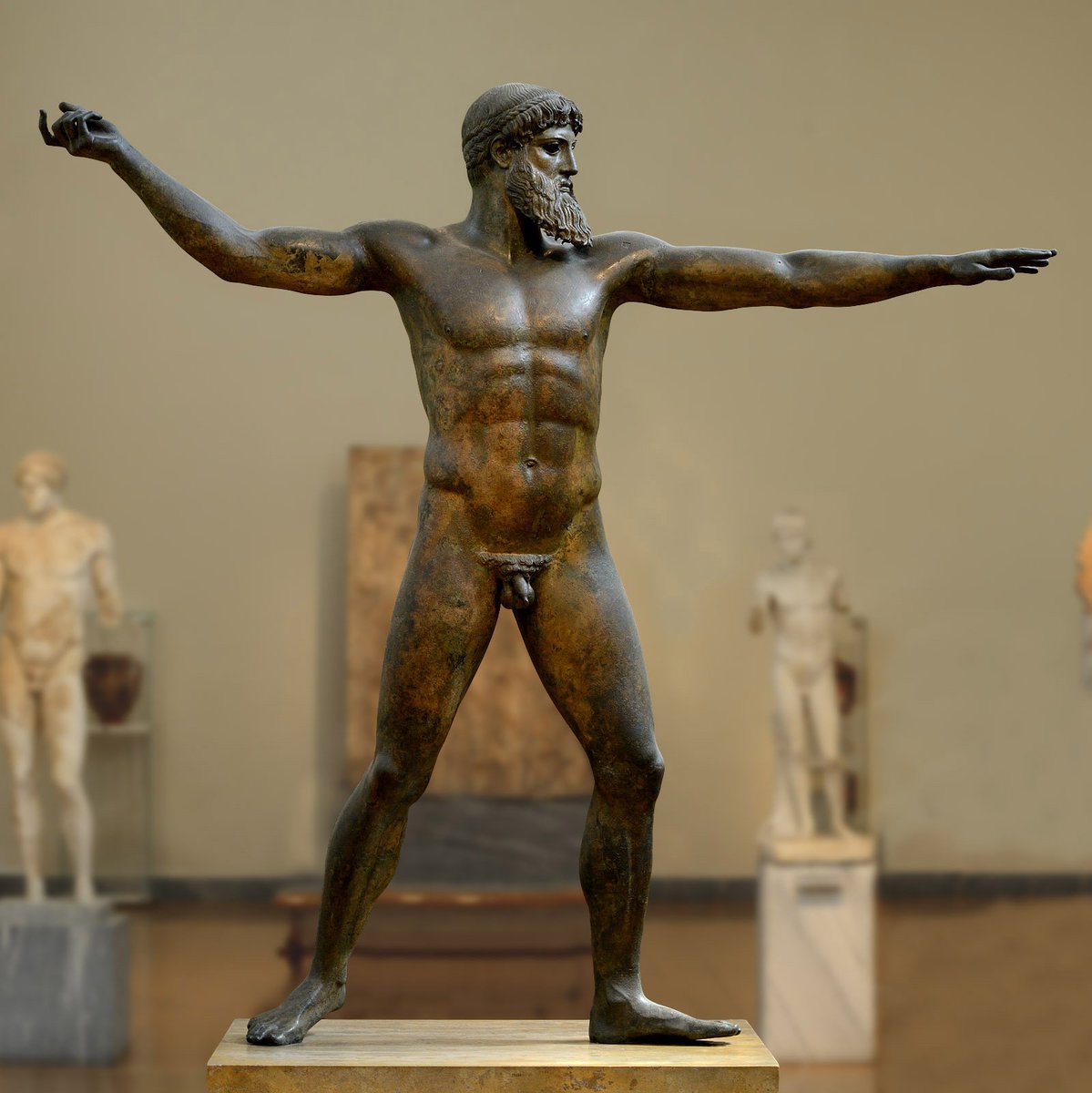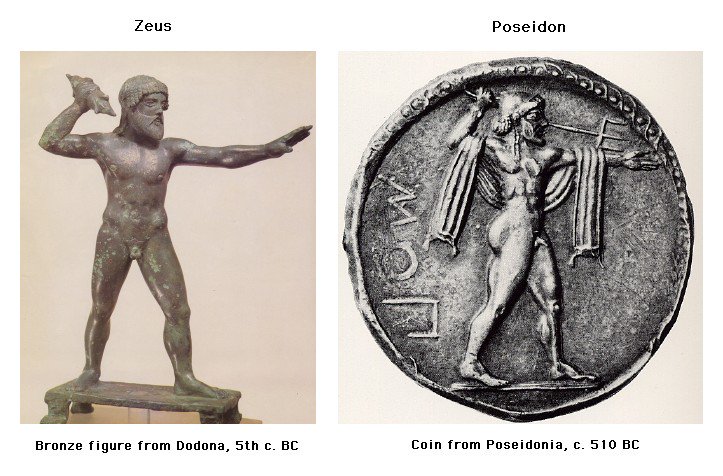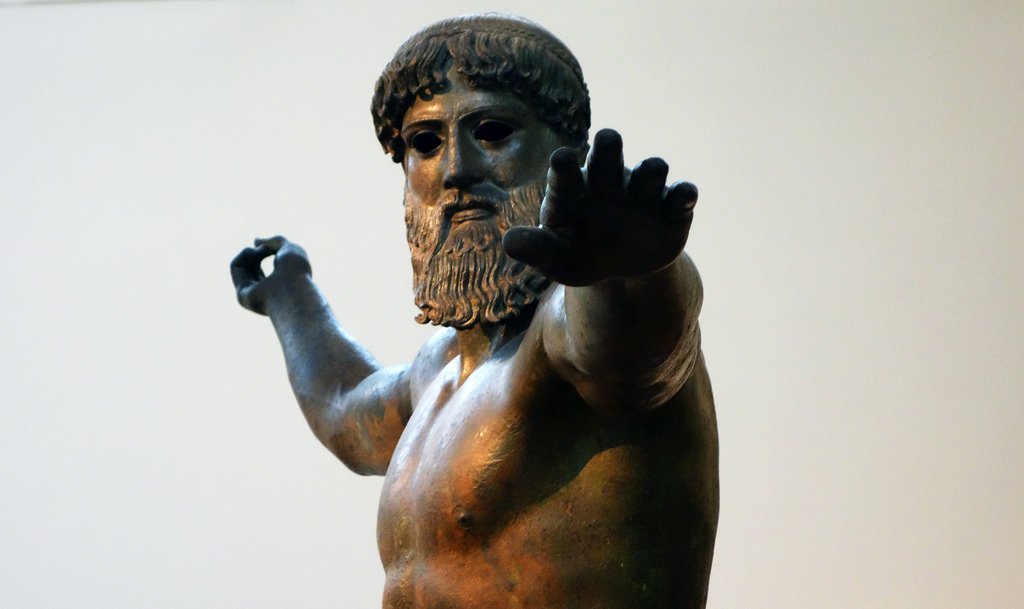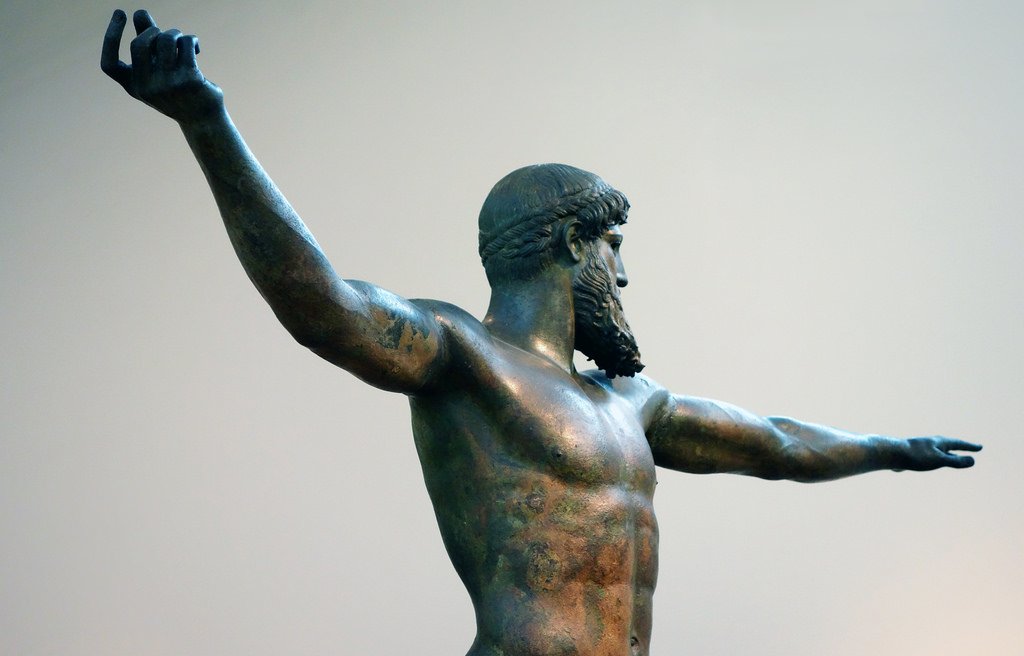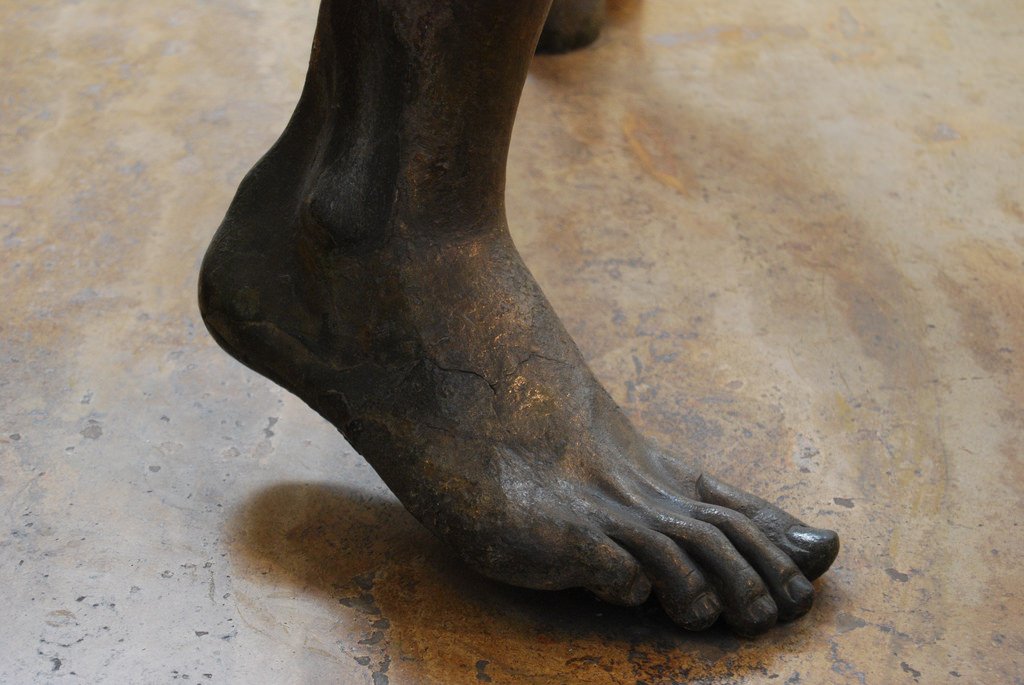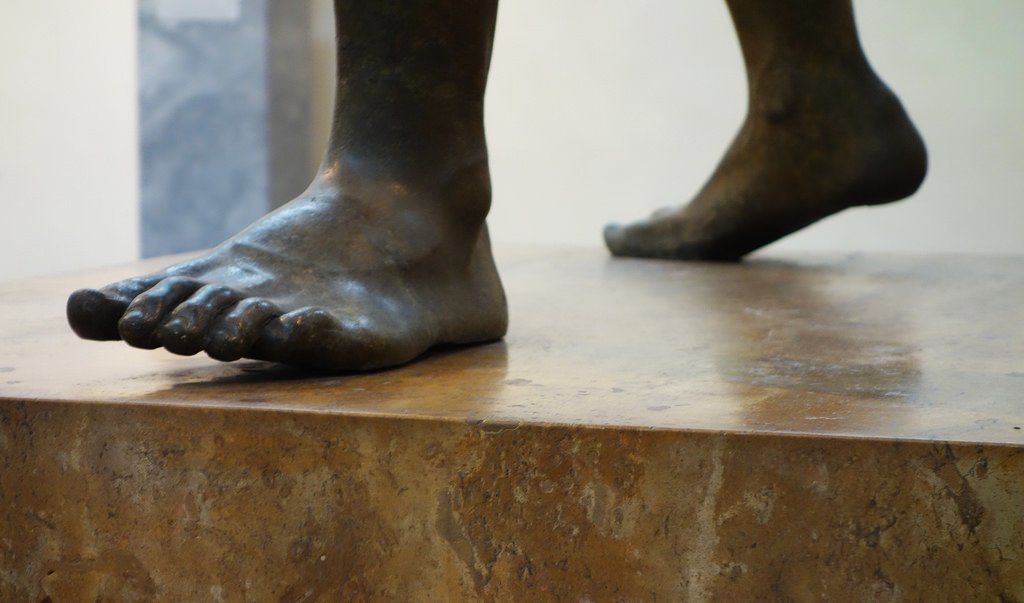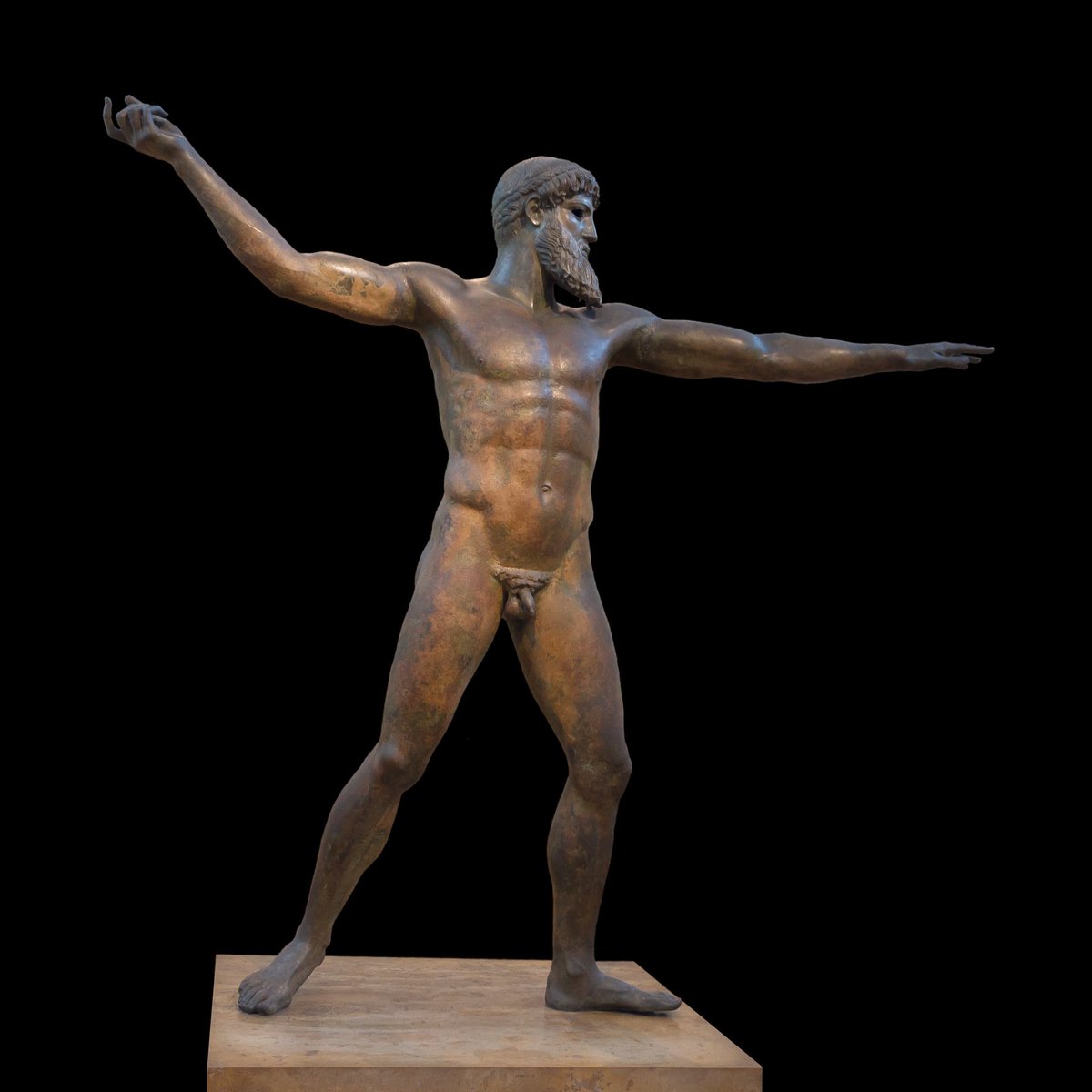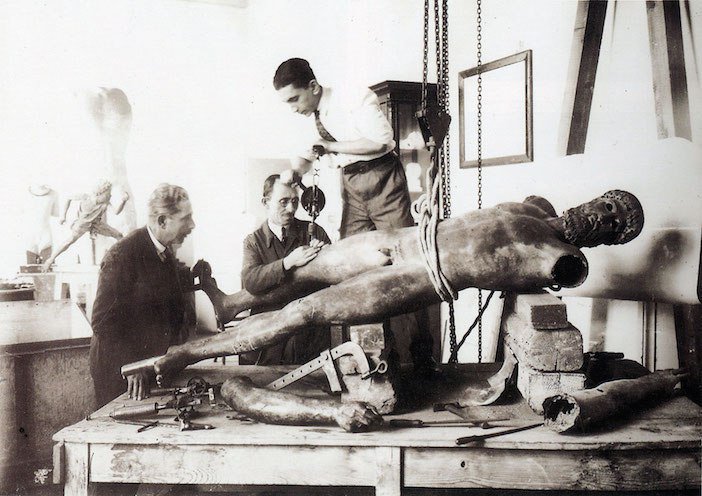There& #39;s been a long debate on these questions: Is the bronze god representing Zeus or Poseidon? Is he wielding a thunderbolt or a trident? In my humble opinion the bronze is representing Zeus, made ca. 460 BC- at The Archaeological Museum, Athens. [1]
Sculpture was first discovered in 1926 (bronze arm) & completely in 1928 at the site of a likely Roman shipwreck (looting Greek art in Corinth after Achaean War?) no earlier than 146 c. B.C. The name Artemision comes from the discovery site at Cape Artemisium, Euboea, Greece [2]
Art historians tend to favor Zeus due to the possible length of the Olympian weapon: Here you can compare Zeus& #39; thunderbolt, which is shorter than Poseidon& #39;s trident but most important from an aesthetic perspective it would& #39;ve not obstructed the god& #39;s imposing face profile.
These detailed views of the Artemision Zeus ca. 460 BC shows you why the ancient Greeks were the first to express in art form the anatomical realism of the human body by emancipating its previous captive-rigid form.
Artemision Zeus stands at 2.09 m high, his weight falls on his left, forward leg, but the figure is balanced & poised. Both arms were elongated by the sculptor to equalize the horizontal and vertical axes of the composition, so his height is equal to the span of his arms.

 Read on Twitter
Read on Twitter